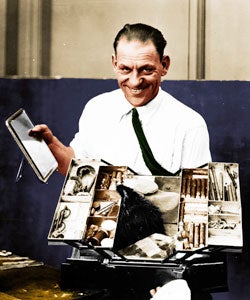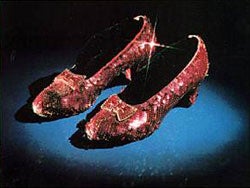The New York Times reported this week that Renzo Piano and Zoltan Pali had been hired by the Academy of Motion Picture Arts and Sciences to build their planned film museum in the old May Company building on Wilshire Blvd., which is owned by Los Angeles County Museum of Art (LACMA). This announcement makes official the new plan for an Academy-funded Hollywood film museum, scrapping the previous plan to build a standalone museum for $200 million on the Vine Street property, just north of the Academy’s Mary Pickford Center. French architect Christian de Portzamparc was attached to that plan, announced with great fanfare in 2007 and undone by the economy less than a year later. Whether the Academy actual completes the new museum depends on whether history smiles on this project, where the line of similar (failed) film museums reaches back to the 1920s. Ironically, the first film museum was also located within LACMA's predecessor, the Los Angeles Museum of History, Science and Art. (The museum was divided in 1961 into LACMA and the Natural History Museum of Los Angeles.)

Back in the 1920s, the Society of Motion Picture Engineers (SMPE) collected equipment for a proposed museum, which was installed in a small permanent exhibit at the Los Angeles Museum in 1929. The collection included material culture donated by Mary Pickford, Lon Chaney, Charles Chaplin and Douglas Fairbanks, including Chaney’s original make-up case. However, the Depression inhibited further expansion. As late as the 1970s, the Natural History Museum still exhibited the remains of that collection, eventually moving it into deep storage after the Museum decided to create an interactive, mostly objectless museum experience.
At the end of the 1940s, producer Sol Lesser attempted to place his large collection of technical film equipment in an existing museum. In the 1950s, there were also a few other large private collections on display in banks and insurance companies. But the most spectacular failure occurred with the Hollywood Museum in the early 1960s. As early as 1957, the City of Los Angeles formed a motion picture committee to collect material for a planned Hollywood Museum, directly across from the Hollywood Bowl. Bank of America and the City Council financed the project, bringing a number of curators to L.A., including the late Sam Kula, who was lured away from the British Film Institute. Ground was broken in October 1963, but before the earth movers could move even an inch towards a small, rented bungalow on the property, its inhabitants refused to vacate. The stalemate lasted six weeks before the whole project collapsed when BofA pulled out.

Even more tragically, many of the priceless objects donated to the Museum by the first two generations of Hollywood actors, writers and directors were “temporarily” stored at the City’s Lincoln County Lock-Up, where for almost 15 years vandals took whatever they wanted. Not until an exposé appeared in the Los Angeles Times in the summer of 1978 were the remaining collections rescued and placed on long-term deposit at the Fashion Institute (costumes), the Margaret Herrick Library of the Academy of Motion Picture Arts and Sciences (documents, posters) and UCLA Film & Television Archive (equipment).
Since the 1970s, several Hollywood museums in private hands have come and gone, including one in which I worked for six years, so Hollywood is still waiting. Hopefully, the Academy will succeed in their endeavor, even if Hollywood ends up on mid-Wilshire. I also hope they borrow from our equipment collections or I fear no one will ever see the projectors, cameras and other technology we have that make up the history of cinema.






 Mobile Navigation
Mobile Navigation


Comments